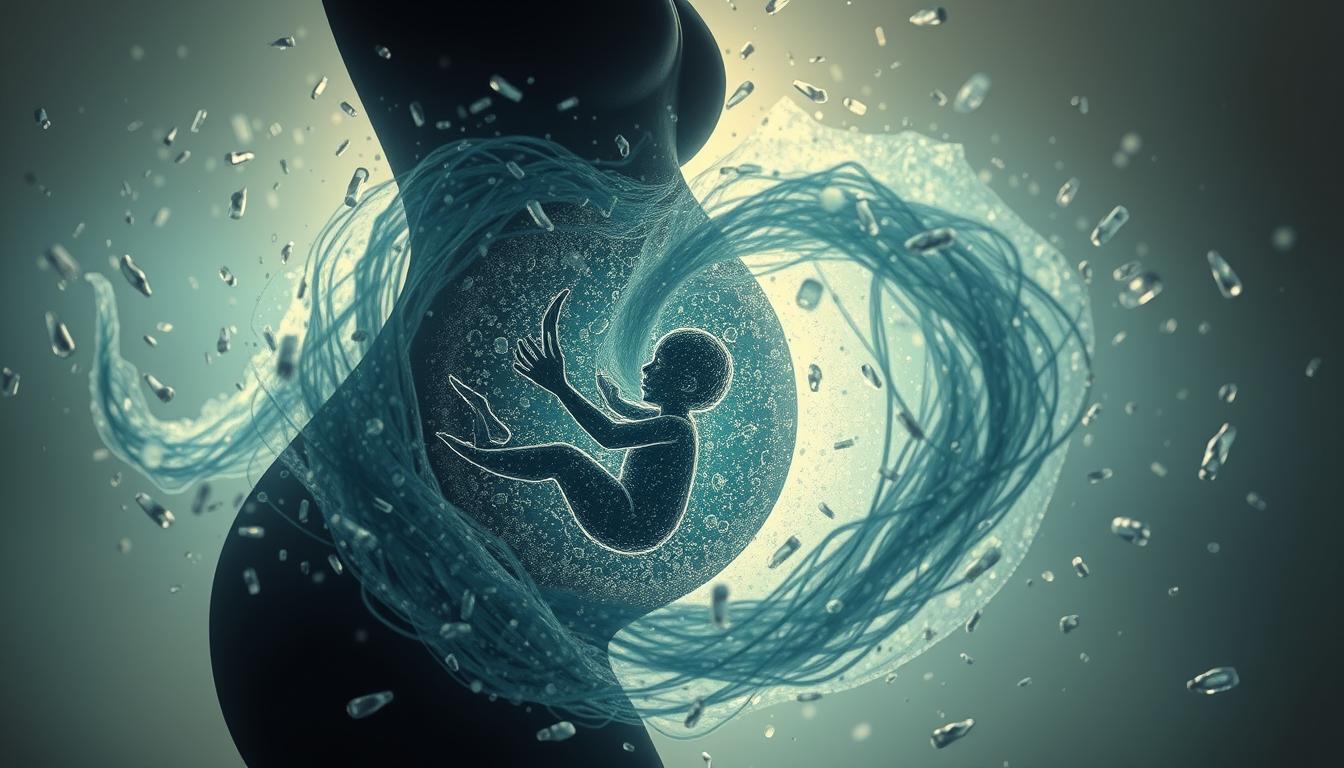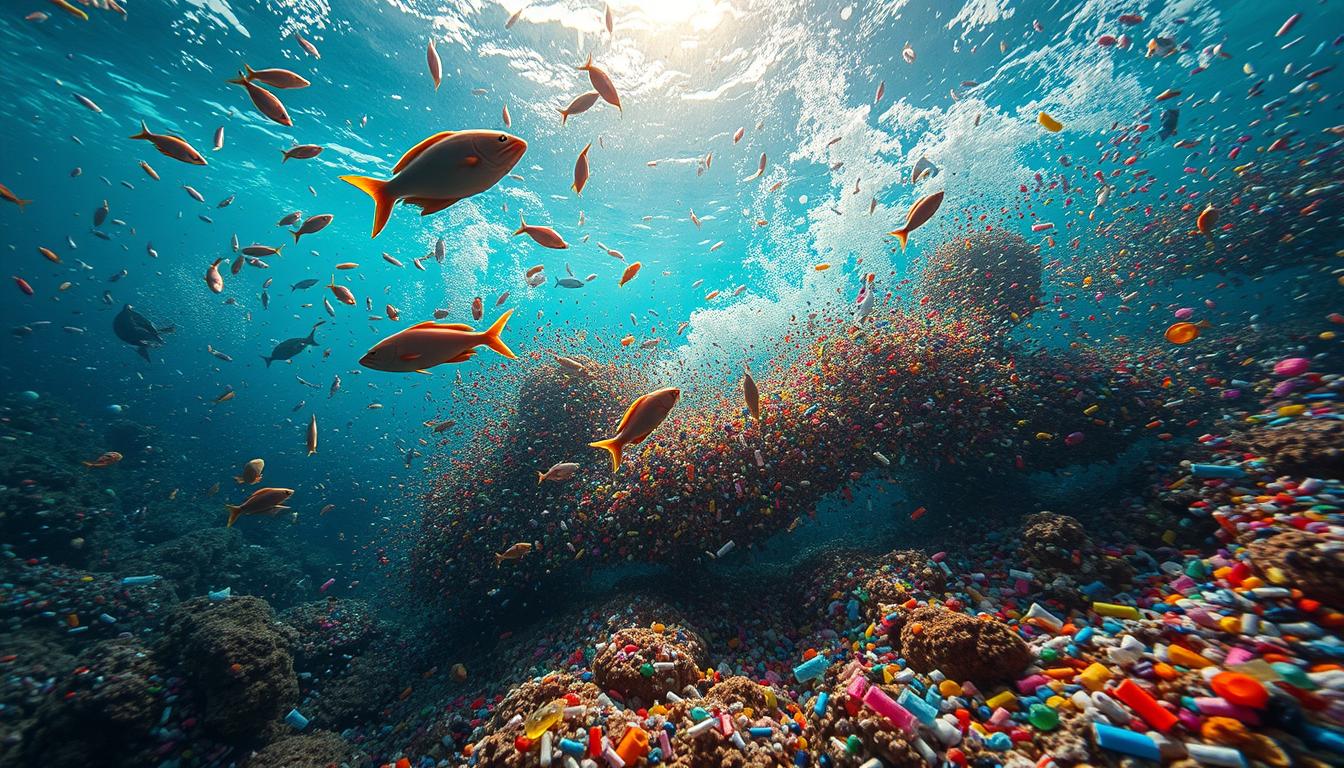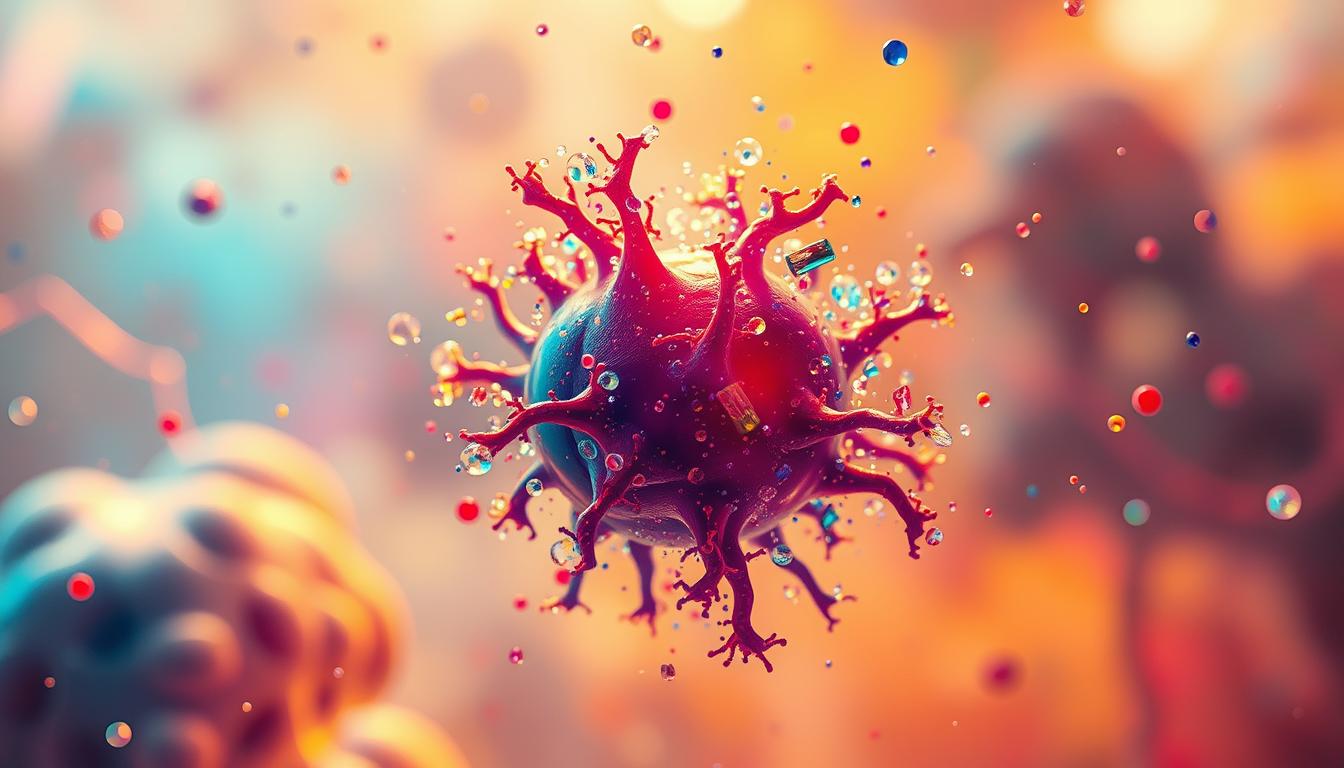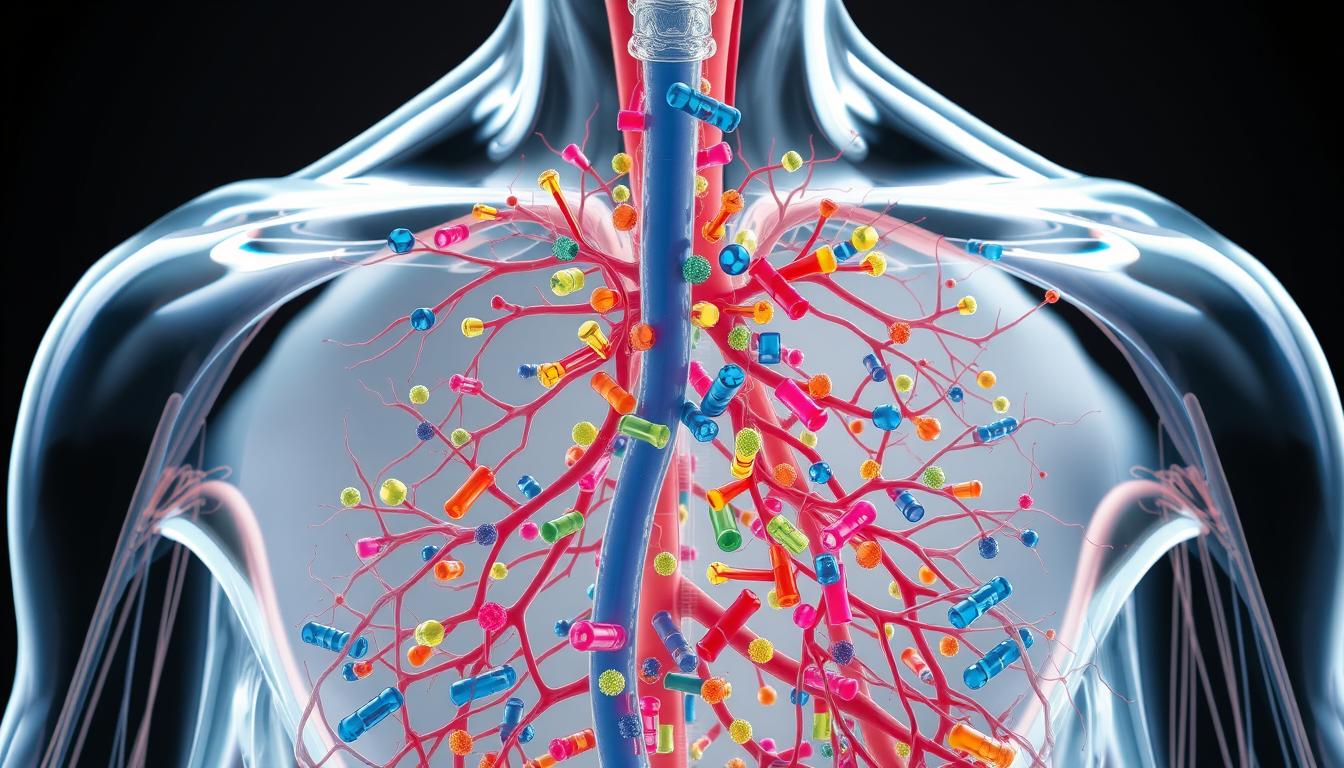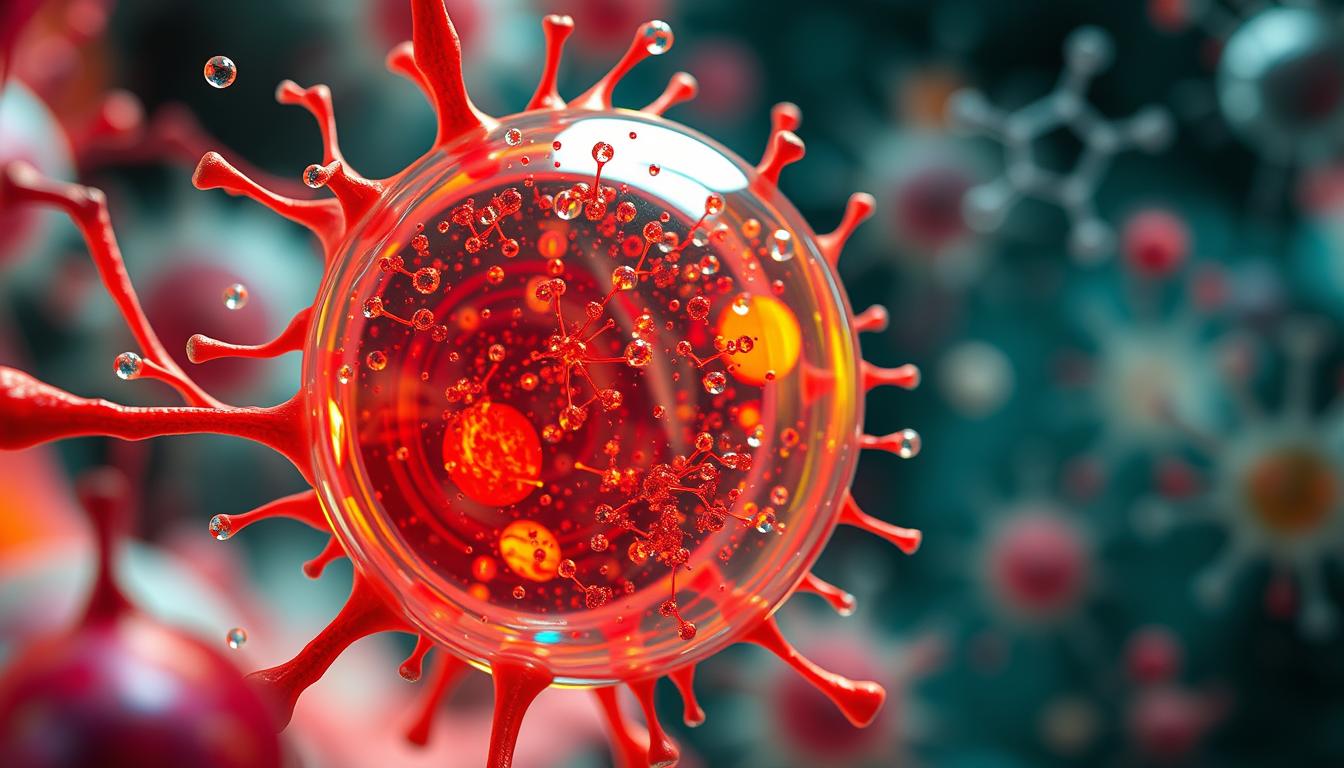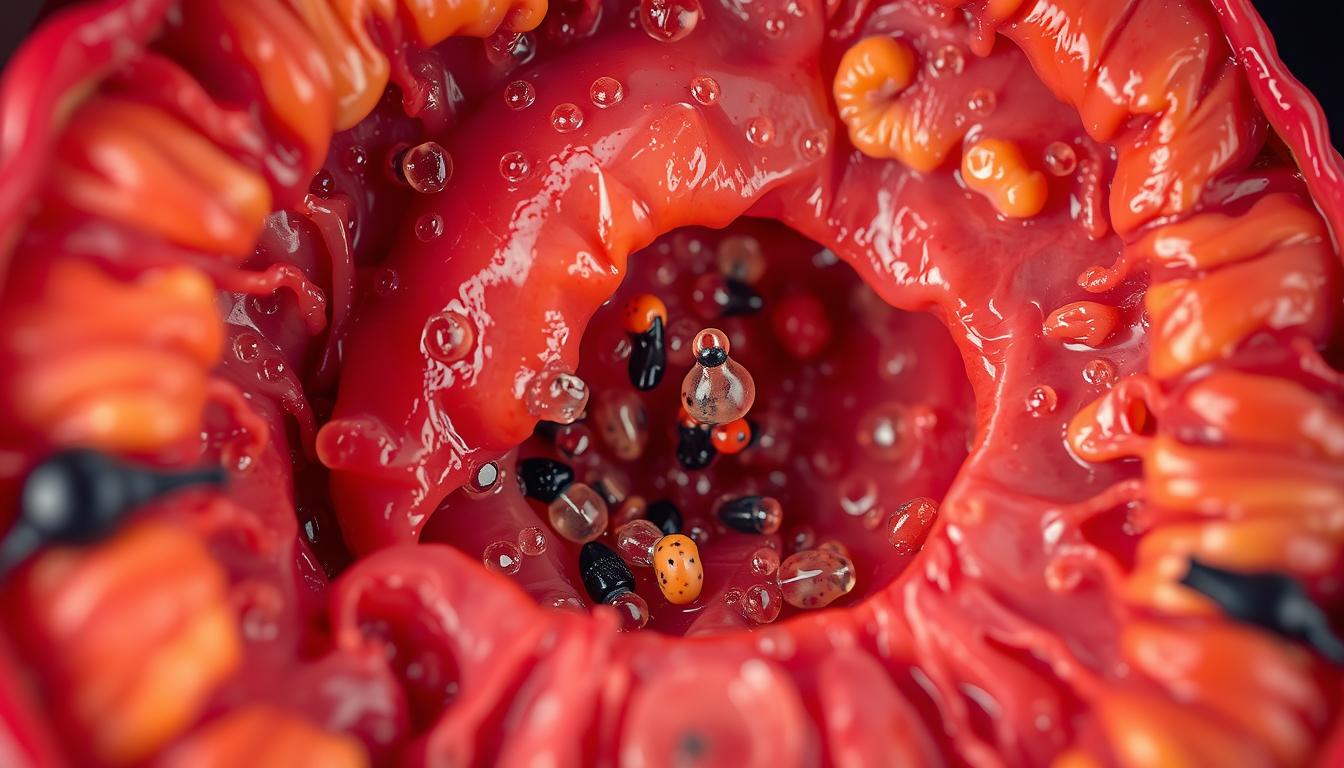Understanding the risks of microplastic exposure on fetal development is key. Bisphenol A, found in plastics, can harm the endocrine system during important growth periods1. Microplastics can even reach the fetus, affecting its development and health1.
Children are at higher risk of health problems like prematurity and cancer due to plastic exposure1. The COVID-19 pandemic has made us use more single-use plastics, increasing these risks1. Using the Bye Microplastics AI app can help reduce these risks and protect your baby’s health.
Research on how maternal plastic exposure affects children’s health is growing1. Studies show links between bisphenols and childhood behavioral issues2. Almost all humans have Bisphenol A in their bodies, showing the need for more research3.
Breaking Research: New Findings on Plastic Exposure and Fetal Development
Recent studies have found that microplastic exposure can harm fetal development. They show a strong link between microplastics and bad pregnancy outcomes4. This is a big worry, as microplastics can cause growth issues, change how the placenta works, and lead to metabolic problems in babies5.
Microplastic pollution is a big problem, with many factors causing human exposure. People are thought to be exposed to about 74,000 to 121,000 microplastics each year4. Also, plastic production is expected to double every 10 to 15 years5. The presence of microplastics in placental tissue is a major concern, as it develops quickly compared to other organs5.
A table summarizing the effects of microplastic exposure on human health is as follows:
| Effect | Description |
|---|---|
| Fetal Growth Restriction | Microplastic exposure can lead to restricted fetal growth and development4 |
| Altered Placental Metabolism | Microplastic exposure can alter placental metabolism, affecting fetal development5 |
| Metabolic Disorders | Microplastic exposure can lead to metabolic disorders in offspring6 |
Experts agree that microplastic exposure is a serious issue that needs more study and action4. The health effects of microplastics on humans are a key area of research. Scientists are working hard to understand how plastic pollution affects our health5.
The Journey of Microplastics Through Your Body During Pregnancy
When you eat microplastics, they can get into your body. They might even reach your baby through the placenta, affecting their growth7. This is a worry because microplastics can harm your health and your baby’s too8.
Studies have found microplastics in drinking water, with up to 10,000 particles per liter8. This shows we need to watch out for where microplastics come from in our lives. Microplastics can get into your body in a few ways:
- Eating food and water that’s contaminated
- Breathing in microplastics in the air
- Touching your skin with products that have microplastics
Knowing how microplastics move through your body during pregnancy is key. It helps you take steps to lower your exposure. This way, you can protect yourself and your baby from harm7. By staying informed and acting, you can lessen the risks from microplastics and other environmental pollutants8.
| Source of Microplastic Exposure | Concentration of Microplastics |
|---|---|
| Drinking water | Up to 10,000 particles per liter |
| Food | Varies depending on the type of food |
| Air | Varies depending on the location and environment |
Understanding How Plastics Cross the Placental Barrier
Microplastics can get into the placenta in different ways, like diffusion and active transport. This affects how a fetus grows and develops9. Plastics like polyethylene and polypropylene in fetal tissue are harmful to our health. Studies show that small plastic particles can get into our cells and even reach our brains9.
Having microplastics in our bodies can harm our lymphatic system and expose us to their toxic effects. It’s known that about 6300 million metric tons of plastic waste have been made worldwide. In 2022, we made 400.3 million tons of plastic, and it’s expected to grow to 1100 million tons by 20501011.
| Plastic Type | Size | Effects on Human Health |
|---|---|---|
| Polyethylene | Less than 150 μm | Penetrate intestinal epithelial cells |
| Polypropylene | Between 0.1 to 10.0 μm | Cross the blood-brain barrier |
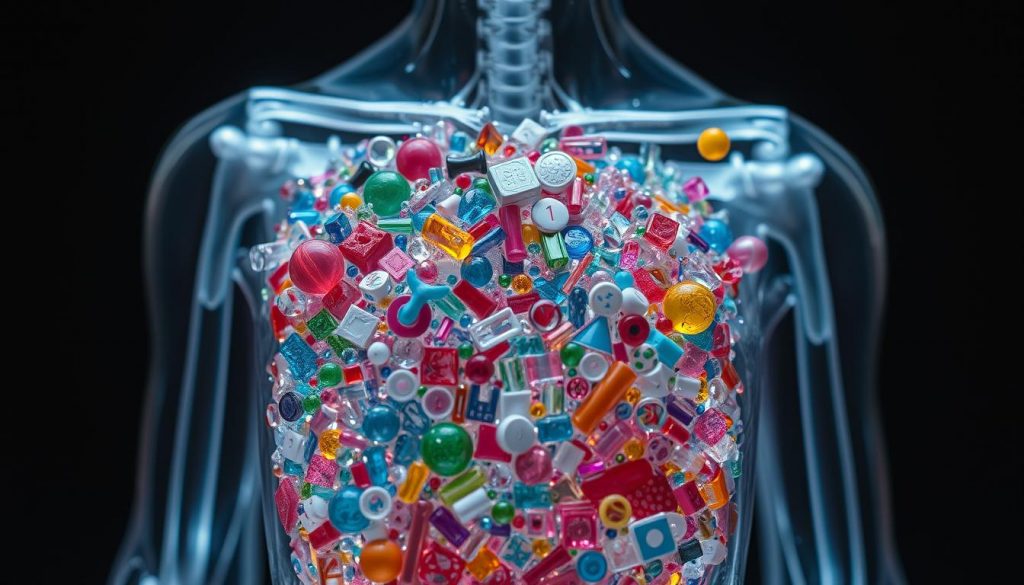
We need to understand how microplastics move and what plastics are in fetal tissue. This helps us fight against Lymphatic system contamination and the toxic effects of microplastics9. By knowing the harm microplastics cause, we can work to lower plastic exposure. This protects our health and the environment1011.
The Connection Between Your Lymphatic System and Plastic Accumulation
Microplastic buildup in our bodies is a big worry. It can cause inflammation and mess with our immune system12. Our lymphatic system helps get rid of toxins, but microplastics can harm it13.
Studies show that microplastics can get into our bodies through our skin and digestive system12. Even tiny pieces can sneak through our skin, reaching our tissues12. This link between our lymphatic system and microplastics is a serious health issue. We need more research on how microplastics affect us.
Here are some ways microplastics can harm our lymphatic system:
- They can build up in our lymph nodes and tissues.
- This buildup can cause inflammation and mess with our immune system.
- It may also increase the risk of diseases like cancer and diabetes.
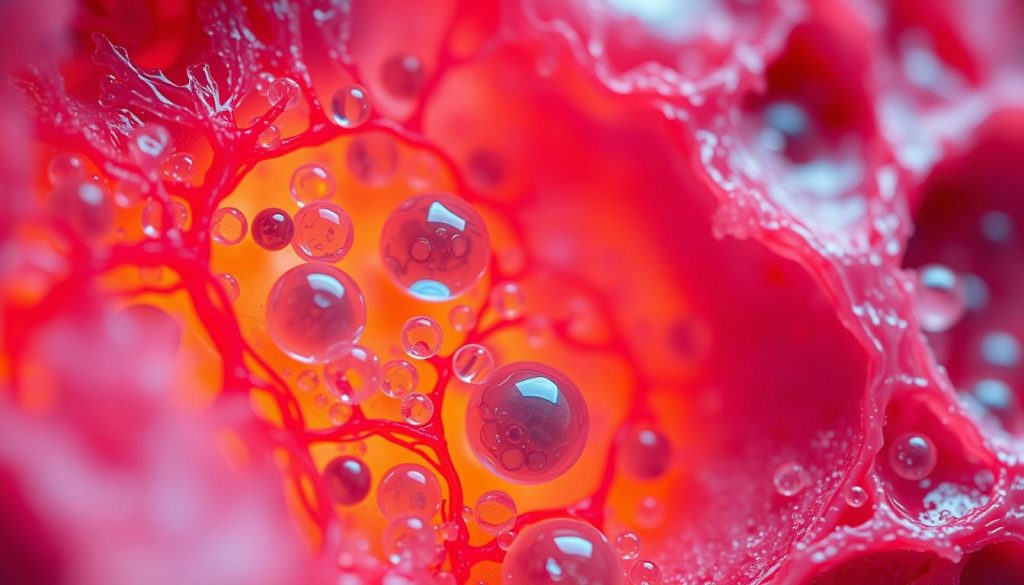
We must understand how microplastics affect our lymphatic system to protect our health14. By making smart choices and reducing our exposure to microplastics, we can lower the risks. This helps keep our bodies safe from the harm caused by microplastic buildup.
Identifying Common Sources of Plastic Exposure in Your Daily Life
Every day, you’re exposed to microplastic pollution from many places. This includes household items, food and drink containers, and personal care products15. These plastics can harm your health, more so when you’re young or vulnerable. For example, you might eat about 5 grams of plastic each week15. This can build up in your body over time.
Some common places where you might find microplastics include:
- Food and drink containers, like plastic water bottles and packaging16
- Personal care items, like toothpaste and makeup, which can have thousands of microplastic particles per gram16
- Household products, such as cleaning supplies and synthetic fabrics17
Knowing where these plastics come from is key. By choosing better products and foods, you can lower your exposure. This helps keep you safe from the dangers of microplastics15.
Practical Steps to Protect Your Developing Baby
To lower the risks of microplastic exposure, it’s key to take action. Start by choosing organic foods and eating less red meat. This can cut down on harmful chemicals like BPA and PFAS18. Also, switch to glass or steel water bottles and use glass for storing food instead of plastic18.
Make your home safer by using cleaning solutions made from baking soda and vinegar18. Know how the government regulates chemicals and try to avoid pesticides and herbicides19. When pregnant or breastfeeding, limit mercury by eating shark once every two weeks and no other fish19.
By following these steps, you can lessen your baby’s exposure to microplastics. This helps avoid health issues like lymphatic system problems and other dangers20. Stay informed and take steps to protect your baby’s health and safety.
| Practical Steps | Benefits |
|---|---|
| Dietary modifications | Reduced chemical intake |
| Environmental adjustments | Minimized microplastic exposure |
| Product substitutions | Reduced toxic substance exposure |
Every small step matters. By making smart choices, you can shield your baby from the dangers of microplastic exposure and lymphatic system contamination18.
Taking Action Today: Download the Bye Microplastics AI App to Safeguard Your Family’s Future
The threat of microplastic pollution is bigger than ever. These tiny plastic particles are in our food and water. But, you can fight back. Download the Bye Microplastics AI app to protect your family21.
This app uses smart technology to find microplastics. It gives you real-time info on products and places that might harm your family. With it, you can make better choices, like clean water and safe home items22.
By acting now, you’re helping your family and the planet. We can all work together for a world without plastic. Download the Bye Microplastics AI app today and help create a better future21.
FAQ
What are the health implications of microplastic exposure on fetal development?
What are the latest scientific discoveries on the effects of microplastic exposure on fetal development?
How do microplastics enter the human body during pregnancy, and how can they affect fetal development?
What are the mechanisms of microplastic transfer and the types of plastics found in fetal tissue?
How does the lymphatic system relate to microplastic accumulation, and what are the possible health risks?
What are common sources of microplastic exposure in daily life?
What practical steps can I take to protect my developing baby from microplastic exposure?
How can the Bye Microplastics AI app help me reduce my exposure to microplastics?
Source Links
- Frontiers | Maternal Plastic Exposure: Implications for Offspring Health and Development
- Development and child health in a world of synthetic chemicals – Pediatric Research
- Scientist show how plastic exposure in pregnancy could explain low weight in newborn boys
- Microplastics exposure: implications for human fertility, pregnancy and child health
- Microplastics in Every Human Placenta, New UNM Health Sciences Research Discovers
- Eating for Two: How Tiny Environmental Plastic Particles in Mom’s Food Reach Unborn Children
- Impact of Microplastics on Pregnancy and Fetal Development: A Systematic Review
- Maternal exposure to polyethylene micro- and nanoplastics impairs umbilical blood flow but not fetal growth in pregnant mice – Scientific Reports
- The Impact of Maternal Nanoplastic and Microplastic Particle Exposure on Mammal’s Offspring
- A Systematic Review of the Placental Translocation of Micro- and Nanoplastics – Current Environmental Health Reports
- Investigating Exposure and Hazards of Micro- and Nanoplastics During Pregnancy and Early Life (AURORA Project): Protocol for an Interdisciplinary Study
- Adverse health effects of exposure to plastic, microplastics and their additives: environmental, legal and policy implications for Israel
- The Plastic Within: Microplastics Invading Human Organs and Bodily Fluids Systems
- Plastic and Human Health: A Micro Issue?
- Plastics and Human Health | Plastics and the Environment Series
- Adverse health effects of exposure to plastic, microplastics and their additives: environmental, legal and policy implications for Israel – Israel Journal of Health Policy Research
- An Overview of the Possible Exposure of Infants to Microplastics
- I’m a Microplastics Researcher. Here’s How To Limit Their Dangers
- Toxic household products to avoid during pregnancy
- Reducing Prenatal Exposure to Toxic Environmental Agents
- Microplastics and Learning: Exploring the Surprising Link
- Bisphenol A (BPA)
